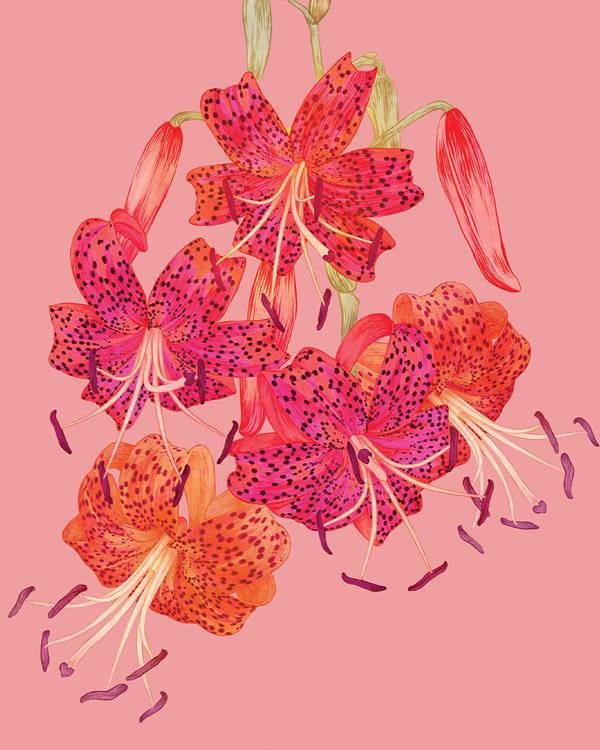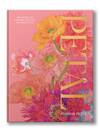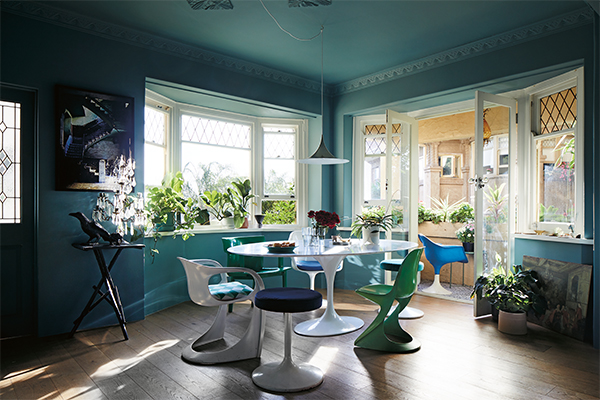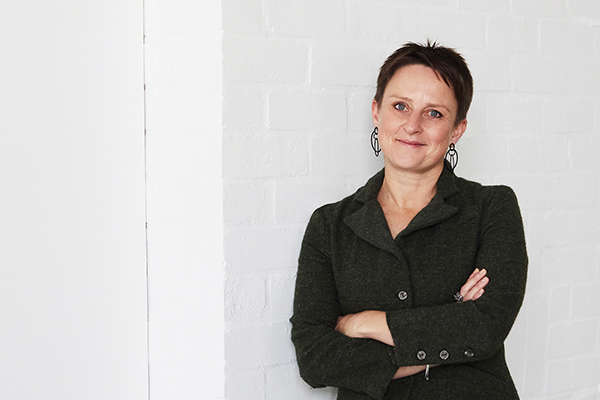Adriana's powerful connection to flowers
12 May 2020 | Adriana Picker
For some people when they look at a flower, they simply see something beautiful, but for Adriana Picker there's so much more attached. Petal is a view of the world of flowers through an artist's eye, and the book is a labour of love for Adriana in more ways than one. Read the beautiful introduction for Petal below.
"When you take a flower in your hand and really look at it, it’s your world for the moment. I want to give that world to someone else."
- Georgia O’Keeffe
TIGER LILY
Alice finds a talking tiger lily in Lewis Carroll’s nineteenth-century classic about her adventures in Wonderland.
When I was five years old my maternal grandmother, Emma, announced to my mother that I would be a florist.
Every time I visited Emma, on the shore of Tuggerah Lake on Australia’s central coast, we would spend hours together in her beautiful garden hunting for blossoms, examining the whorls of a fleshy begonia leaf and inhaling the heady scent of her heritage roses. It was our tradition, our first and most important activity directly after my arrival for a visit, to collect a bunch of blooms for the dining table. Much to my mother’s surprise, I was also given the great honour of being able to pick any flower I chose.
Emma’s garden was a fairly typical quarter-acre block with a single-storey brick veneer house, without any real distinguishing features from its neighbours. But to me, this average Australian backyard was a magical world of discovery. Emma had a penchant for cymbidium orchids – ubiquitous amongst gardeners of her generation. She also had a fantastic collection of garden roses in romantic shades of deep vermilion and delicate blush pinks, along with sweet white crocus es and begonias with their intricately bejewelled leaves. With every visit, there was something new to marvel at.
I did not have very long in Emma’s garden; she died when I was seven and my grandfather sold the house. On the day of Emma’s funeral, with the entire family gathered at Tuggerah Lake, her roses were in full, glorious bloom, and I collected a huge bunch for the dining table. My aunt Margo made me point out each rosebush I had picked from so that she could move them to her own garden in memory of her mother.
My botanical education continued after Emma’s death, furthered by my mother, Sally, also an avid gardener. Our family lived in the wonderland that is Australia’s Blue Mountains, a haven for flower-power hippies in the mid-nineties. We were immersed in nature, running wild in the bushland right next to our house. On the walks we would take through the national parks, Mum taught me to identify plants with their botanical names. I was in love with all the banksias and their mesmerising Latin titles: Banksia serrata, Banksia integrifolia, Banksia grandiflora. Mum taught me to pick mountain devil (Lambertia formosa) and suck the sweet sap from the base.
Among the flowers of the Blue Mountains my already vivid imagination flourished, and I began to draw in earnest.
Throughout my childhood and teenage years I explored many artistic mediums, always happiest when I was making. At twelve I discovered a great passion for sculpting life-sized busts out of clay. Not long after this I threw myself into oil painting, enthralled by the rich colours, intoxicating smell and long history of the medium. My very tolerant mother let me paint for hours inside our house, ignoring the mess I was making of her carpets.
After school, I studied design and started working in costume departments on studio films, but between shoots I returned to my first love: pen on paper. And for some reason, it was when I started drawing plants again (ignoring all the commercial illustration trends I saw at the time) that my career as an illustrator took off. My floral images now come to life digitally, which gives me the entire colour spectrum at my fingertips – and the freedom to create, wherever I am in the world.
My life is still punctuated by flowers. I spend my days observing their form, shape and shades, and drawing them in minute detail. On my travels I seek out flowers; a morning walk becomes an opportunity to search for a new bloom for my next work. It could be a brilliant fl ush of heady lilac in the early Brooklyn spring, or a spindly stalk holding up the great spreading head of Queen Anne’s lace from the gravelly side of the road. I spend countless hand-numbing, back-bending hours on each botanical artwork and I have never yet, not once, tired of my muse. Nature continues to delight and surprise – and I am perpetually under her spell.
Flowers unfurl their petals, some for mere hours, to attract not only pollinators – birds, beetles, bees, perhaps a bat – but also humans. Early plant hunters endured extreme weather, disease and near death while travelling to remote lands in search of botanical treasures, returning with specimens that breeders turned into never-before-seen hybrids. One of the greatest speculative bubbles in history, the Dutch tulipmania, emerged from the obsession of botanical collectors. Cut flowers have so entirely seduced us that we now buy some ten million a day worldwide.
This book is my love letter to these ephemeral jewels of nature: a celebration of the floral world. Within these pages lies a collection that spans priceless hothouse gems and unapologetic roadside survivors. The world of flowering plants (otherwise known as angiosperms) is so vast, varied and alluring that narrowing down the selection has been an excruciating process. I want this book to not only highlight our most loved blooms, but also to shine new light on those plant families considered unfashionable or not highly valued. The humble geranium, for example, has long been a favourite of mine; anything that boasts a variegated leaf, with its painterly stripes or swirls and contrast of colours, catches my breath and sets my heart aflutter. Even something as ubiquitous as a corner-store tulip swaddled in plastic can still bring brightness to a kitchen table. Th rough this book, I want to share my vast passion for flowers, with the hope the viewer can gaze with a fresh lens, perhaps inspiring exploration of a plant that was previously off the radar.
Flowers for me are still so strongly linked to family, in particular my grandmother and mother. Flowers have become the vessels of my fondest memories, connections to the places where I find the most joy and reminders of the people I most cherish. No wonder flowers have been a constant and enduring love in my life. So many years later, the flowers I first encountered in Emma’s garden are my favourites to draw. I think she would be so very thrilled if she could see the work I do today, as a florist of sorts, certainly a collector and cataloguer of flowers. She prophesied correctly. This book is dedicated to her.
This is an edited extracted from Petal by Adriana Picker
Available in all good bookstores and online
Click here to find your preferred online retailer.




